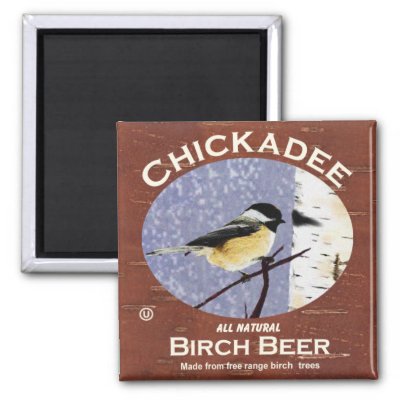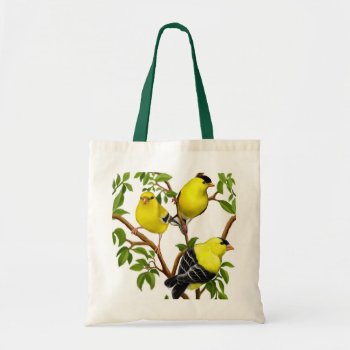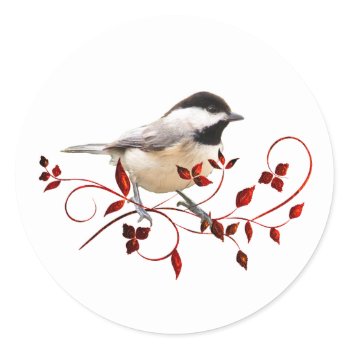Original fine art design of colorful American goldfinches by artist Carolyn McFann printed on a quality tote bag for bird fans. See a few of our products below (click to go to that product) and visit our very artistic stores at: Two Purring Cats Clothing and Gifts Home Dinnerware by TPC Studio Invitations by TPC Studio The Case Place Laptop,Tablet & Phone Case Gallery Two Purring Cats Cards and Stationery Ornamentation, the Holiday Ornament Gallery An Elegant Affair Weddings A Store for Survivors
Continue reading
Tag Archives: chickadee
MIdnight party at the feeder mug
masked and hatted birds having a party
Continue reading
Chickadee Round Sticker
People who love Chickadees know that they are a friendly little bird. This pretty Chickadee on some red leaves will make a great gift for a bird lover.
Chickadee-dee-dee Refrigerator Magnet

A bottle label for mythical All Natural Chickadee Birch Beer Cola bottled in Willow. AK. Features the image of a chickadee perched on the branch of a birch tree. There are seven species of chickadees in North America. Chickadees are found throughout much of the continent including Alaska and most of Canada. They are also found on Prince Edward Island, Newfoundland, Nova Scotia, Queen Charlotte Island and Vancouver Island. In general, they do not migrate. Every couple of years when populations are high, birds that hatched within the past year may "irrupt" (spread out), or move southward in the fall. Have you ever wondered how chickadees, weighing about 12 grams and small enough to fit inside a human hand, can survive winter? They have high metabolic rates and little body fat. On cold winter nights, Chickadees reduce their body temperature by up to 10–12 °C (from their normal temperature of about 42 °C) to conserve energy. Such a capacity for torpor is rare in birds (or at least, rarely studied). While this may seem counterproductive, “nocturnal hypothermia” probably reduces energy expenditure by as much as ten percent. As winter approaches temperatures decrease as does the supply of insects, berries and seeds. The birds must eat during the day and put on sufficient fat to be metabolized as heat during the night. Some studies suggest chickadees may gain ten to a whopping 60 percent of their body weight in a day to keep warm through the long winter night. On extremely cold nights, a chickadee uses almost all of its body fat to keep warm, then replaces it the next day in order to repeat the cycle. To ensure a food supply, during autumn the chickadee roams a territory covering tens of square miles, gathering morsels of food and stores them in hundreds of hiding places in trees behind buckled pieces of bark, in patches of lichens and other caches. In the fall the chickadee's hippocampus, the part of the brain responsible for spatial organization and memory, grows by 30 percent. In the spring, when memory requirements lessen, the chickadee’s hippocampus shrinks back to its normal size, In the states of Alaska and Washington, and in parts of western Canada, Black-capped Chickadees are among a number of bird species affected by an unknown agent that is causing beak deformities, which may cause stress for affected species by inhibiting feeding ability, mating, and grooming. Black-capped Chickadees were the first affected bird species, with reports of the deformity beginning in Alaska in the late 1990s, but more recently the deformity has been observed in close to 30 bird species in the affected areas, as reported by the Alaska Science Center of the United States Geological Survey.



